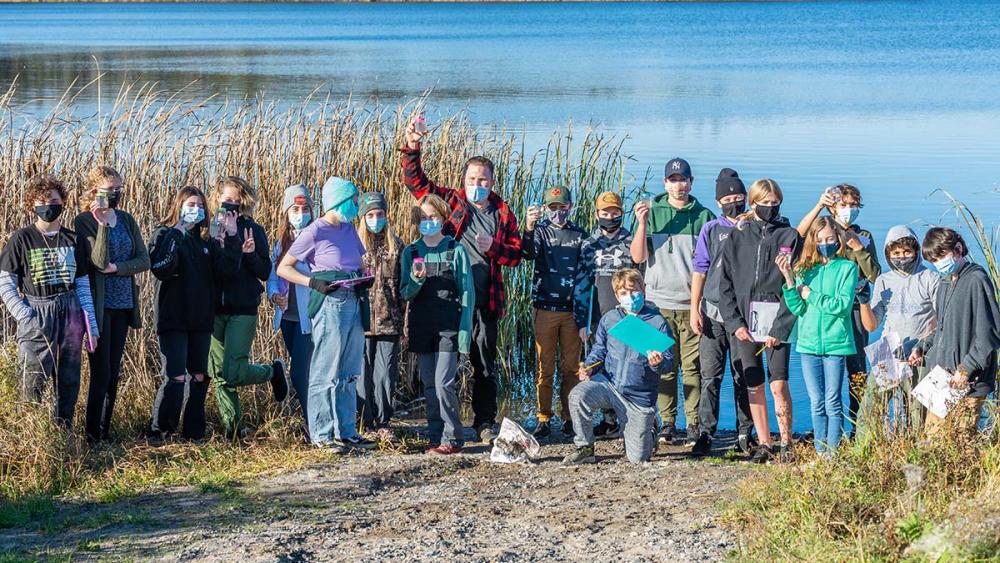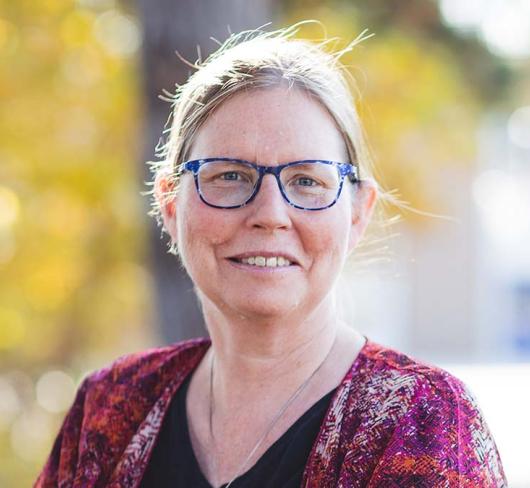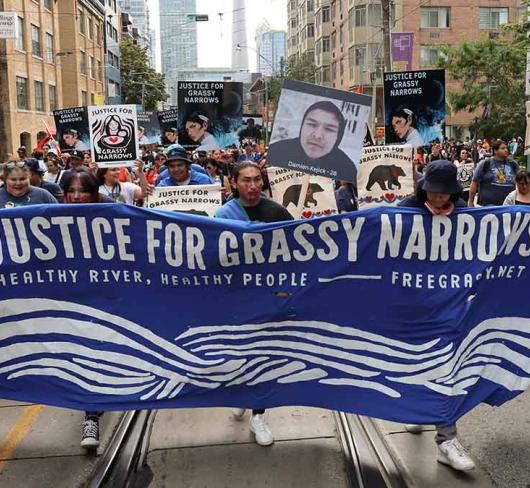
Photo by Kimberley Pirie-Milko/Naturescapephoto
Teaching in the North
In the past few weeks, middle school students at Beaver Brae Senior Elementary School have participated in a cross country run and a mountain bike race right outside our school doors through the dense boreal forest on a vast trail system. Students walked to a local lake in fewer than 15 minutes and collected water samples to compare drinking water, tap water and bottled water under a microscope. Students took a five-minute bus ride to the rowing club and tried rowing for the first time. They learned math in the bush, studied symmetry in the environment and created art in nature. Students honoured survivors of residential schools during the National Day of Truth and Reconciliation by listening to local Elders and Knowledge Keepers share their stories, participating in cultural activities and enjoying traditional wild rice soup and bannock.
If you are a person who loves the outdoors, you will love the North. We leave school and have the option of going fishing, hunting, canoeing, kayaking, paddleboarding, hiking, boating, rock climbing and the list goes on. As a middle school teacher in Northwestern Ontario in the small city of Kenora, I feel privileged to be able to share some of my experiences of what it is like to teach and live in the North. I hope that educators reading this article finish with ideas for their own practice.
I teach middle school students in a Grade 7-12 school in Beaver Brae, which is part of the Keewatin-Patricia District School Board (KPDSB). The KPDSB is situated on the traditional land of the Anishinabeg people and the Métis people of Treaty 3, 5 and 9 territories. We have a high Indigenous population in Beaver Brae and the school board, as approximately 60% of all students self-identify as Indigenous. We are fortunate to have Elders and Knowledge Keepers closely connected to our schools. I have learned a wealth of knowledge from both and am always learning more. Elders and Knowledge Keepers are essential to our learning and help ensure cultural continuity.
Many of the First Nations communities and families are strong in Anishinaabe knowledge and practices. Anishinaabe language, however, appears to be spoken less in the younger generations. To support the revitalization of Indigenous languages, at Beaver Brae, we offer an option for students to learn Anishinaabemowin instead of core French as their second language class. Part of the Truth and Reconciliation Commission’s Calls to Action is to restore Indigenous languages that, through residential schools, were intended to be erased. Specifically, one Call to Action is “Protecting the right to Aboriginal languages, including the teaching of Aboriginal languages as credit courses.” By offering Anishinaabemowin courses, the younger generation has an opportunity to learn their traditional language in a public education setting. These programs go beyond just teaching the language, with communities and families bringing local knowledge to the curriculum.
The KPDSB is unique in many ways. It spans an astounding 75,000 square kilometres, with Kenora in the west (only 45 minutes from the Manitoba border), Upsala in the East (just outside of Thunder Bay), and our most northern school in Pickle Lake. Our 5,000 students are very spread out. When schools get together for events such as a volleyball tournament, coaches and students prepare for a full day, sometimes leaving from school in the morning when it is still dark and arriving back at the school in the evening when it is dark again.
In the North, we have a consortium school bus service where students from different school boards catch the same bus. Due to our large geographic area it makes much more sense logistically to share buses where there are few students on longer routes. Some of our students come from communities up to two hours away. This can be problematic for a few reasons. The roads are not always clear and the weather can present challenges for driving on our single-lane highways in the winter months. Buses will not run when inclement weather may result in unsafe conditions; we expect a number of snow or extreme cold days each year.
We are in what we call Sunset Country, as the sunsets over the boreal forest and freshwater lakes are breathtaking. I was born and raised in Kenora, went to school at Beaver Brae and am fortunate enough to give back to my community through a career I love. My experiences as a student in Kenora are why I chose a career in public education. I have gone as far as completing my Doctorate in Education, where my research focused on “Improving Physical Literacy in Middle School Indigenous and Non-Indigenous Students.” How do we encourage physical activity? How do we bridge the connection for students between mental health and physical health? How do we teach students to value and take responsibility for engagement in physical activities for life?
Physical Literacy in the North
Physical literacy isn’t a new term and is more essential to the field of public education today than ever before. We want all students at Beaver Brae to develop their physical literacy and to be able to demonstrate a variety of movements confidently, competently, creatively and strategically across a wide range of health-related physical activities. The opportunities for students to be active in the North reflect our geography, climate, infrastructure and local sports and activities outside of school. A physical literacy-based program teaches students to move using motor competence in a wide variety of physical activities throughout multiple environments (i.e., land, water, ice, snow). It benefits the healthy development of the whole child and is the motivation and confidence children need to develop both the mind and body. Learning is fundamental to education and so is physical literacy. Students who participate in learning-based physical activity programs become more motivated to learn across their other subjects. It is not uncommon for students to be snowshoeing, cross-country skiing, ice fishing or building quinzees in the North.
We have an extensive intermediate sports program that consists of 12 different sports (mountain biking, football, cheerleading, cross-country running, volleyball, wrestling, basketball, Nordic skiing, badminton, soccer, track and field and baseball). Part of the benefit of being in a Grade 7-12 school is that students get more extracurricular opportunities because high school coaches see potential in students early and encourage them to join programs and develop their skills and abilities prior to entering Grade 9.
We take a unique approach to our Grade 7/8 sports program and don’t “cut” any kids from our teams. In the North, we don’t have all of the community programs many cities have so we focus on skill development and teach the kids how to play different games. I remember one year we travelled to Winnipeg with 106 students for two basketball tournaments on the same weekend. We created four girls’ teams and four boys’ teams and had several coaches including high school basketball players who received volunteer hours to develop leadership skills and mentor the next generation. The kids all loved it and developed an appreciation not only for basketball but for physical activity in general. Our sports seasons consist only of tournaments with some exhibitions. We can’t run a league because of the distance between schools and the cost of travel. Tournaments are much more fun anyways.
Physical Literacy Through Mountain Biking
The Bronco Mountain Bike program, founded by Mike Kraynyk, is a high-interest program where students learn a form of active transportation and how to maintain their own equipment, fix it when it breaks down and ride safely through trails and on roadways. The mountain bike program has several cross-curricular connections to math, science and physical education and provides kids with the important moderate-to-vigorous physical activity they need throughout the day. There are many community connections and a tonne of support from different organizations in our community. The O.P.P., metal yards, the transfer station, Triple PLAY, Canadian Tire’s Jumpstart and The Hardware Company are all supporters of the program. Many kids enter Grade 7 without knowing how to ride a bike. By the end of Grade 8, every student can ride a bike confidently and safely. This is so rewarding for both students and teachers. A true testament to the program are the bike racks at school. They are always full, spring through fall. Students develop a sense of independence and confidence. They carry that confidence with them throughout the day. Hundreds of donated bikes have come through the bike shop. The program is also eco-friendly. Our local transfer station puts aside all the bikes that are on their way to landfill, and students use and reuse whatever parts are salvageable. Defective bikes returned to Canadian Tire are forwarded to our program for parts as well, and Triple PLAY financially supports students who apply not only to build their own bikes but to keep them. The Hardware Company is very generous and gives a percentage off all parts and hardware needed to finish building the bikes that have been salvaged. The Hardware Company and Canadian Tire have hired students straight out of the program to work on and build bikes, and one of our students even started a successful business, “Wheely Good Bike Tune-ups”, repairing bikes in the community. We are very fortunate to have a vast trail system and a lot of land to run the bike program. Every year the trail system improves a little bit as students maintain and create new trails. Students learn to ride safely and now have a way to actively transport themselves to a job, a friend’s house or school. If they choose, they can join our Mountain Biking team that races against other schools in the area.
Takeaways
Use Outdoor Space: Kids love learning outside, even in the cold. Not every school has access to a large outdoor space, but make the best of what you have. There is often a local park within walking distance of the school. Consider making an excursion out of it. Learn in the environment and about the environment. Check out this website for some great ideas: takemeoutside.ca
Learn Locally: Every community has something to offer, whether urban or rural, in southern Ontario or northern Ontario. What opportunities are in your area? How can you connect curriculum to the environment you live in? Every community has a history. How can this be used to bridge connections between students and their learning?
Community Partners: Community members and organizations often want to be a part of schools in some shape or form. Partnerships start with a conversation. I think of the Mountain Bike program and how excited the entire community is after more than a decade. Without community partners, the bike program would not be as successful as it is today, and the hundreds of students who have been through it would not have had that experience. What program are you running and what programs do you want to start? Consider who you can partner with in the community.
Develop Physical Literacy: We are in a time where sedentary lifestyles are becoming a significant issue for public health. Just getting kids active is not enough. We need to teach them how to be active and help them bridge connections between their physical and mental health. Teaching a student to ride a bike is the perfect example. They engage in vigorous physical activity while learning a form of active transportation that they will carry with them forever. Now that is what education and physical literacy are all about!
Dr. Jarod Milko is a member of the Keewatin-Patricia Elementary Teacher Local.

